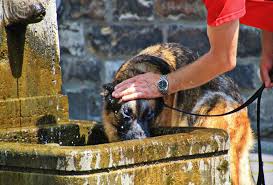 For a great deal of the planet, 2018 has been the hottest summer on record. There are lots of implications for high temperatures, including heat stroke.
For a great deal of the planet, 2018 has been the hottest summer on record. There are lots of implications for high temperatures, including heat stroke.
People in mild climates, like Alberta, rarely take things like heat stroke seriously. However, it is not something to take lightly. Infants, the elderly, athletes, outdoor workers and pets are especially at risk. Heat stroke symptoms can initially include: confusion, agitation and the absence of sweating. In severe cases, it has the potential to lead to a coma or even death. In children, hot, dry red skin, listlessness, and rapid breathing and heart rate are symptoms to watch out for. With dogs, you want to look out for bright red gums with excessive panting, thick saliva and rapid heartbeats. For anyone left in the heat for too long, serious damage can result.
What do you do if you see it happening?
Maybe your dog has been left tied up outside too long, or you come across a child stuck in a car in the heat. Perhaps you go for a long hike while out RVing and your father becomes confused in the heat. Whatever the case, if you suspect heat stroke, it is important to act quickly. Permanent organ damage can occur if you don’t decrease body temperature. Move to a shady area and lie the person down and elevate their legs. Remove or loosen any unnecessary clothing. You may need to apply cool (not cold) water to the skin and fan it to promote evaporation. Cool water or non-alcoholic beverages are also important. If you can, monitor body temperature with a thermometer, and continue all cooling efforts until the body has dropped to 38.3 to 38.8 C. If you have something like isopropyl alcohol on hand, wipe it on the pads of pet’s paws, as well as their groin area, to increase evaporation.
You may need to start with warm water and slowly move to cooler water to avoid shock, which is also dangerous. Don’t use very cold water as this can actually prohibit heat dissipation. Avoid anything that makes the pet or person shiver – a gradual decrease in temperature to normal body temperature is desired. In an emergency situation, immediately call for medical help
The best way to deal with heat stroke is to prevent it. Avoid strenuous exercise in high temperatures and keep well hydrated in any heat. Never leave a helpless animal, child or incapacitated person in a hot car and get in the habit of checking the back seat before you walk away from your vehicle. With proper attention and care, the heat can be wonderful. However, heat stroke is serious and should be treated as such.
